New infrared thermometers operate in 250°C ambient temperatures without cooling – a world first!
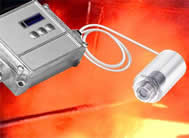
A unique infrared thermometer has been launched, which is ideal for use in high temperature production lines and process environments, enabling the precise temperature measurement of materials such as fabric and web working in ambient temperatures of up to 250°C, without any need for cooling.
The non-contact sensor, developed by precision sensor manufacturer Micro-Epsilon, opens up a diverse range of new applications and markets. The Optris CT hot represents a genuine leap forward in its sensor class and enables temperature measurements from –40°C up to 975°C in ambient temperatures of up to 250°C without any cooling of the sensor head. This is possible due to several new design features: new detector materials, a new mechanical design and new high temperature cabling. Micro-Epsilon has used its considerable in-house development capabilities to design new semiconductor electronics and connectors, as well as a more robust, compact sensor housing that allows the unit to be adapted to suit standard industrial mountings, flanges and brackets.
Potential applications for CT hot include ovens, dryers, heat treatment lines in the metal and glass industries, paper, plastic, textiles and semiconductor manufacturing. The control of drying and finishing processes of textile fabric, carpet, paper, cardboard, corrugated paper, plasterboard sheets, timber and plastic compounds. Multiple CT hot sensors can be used inside heat treatment lines with several process chambers to measure temperatures of the web or fabric at different points over the length and width. The benefits for the customer are that information can be obtained about the drying curve of the material, moisture content, non-uniform application of coatings and bonding.
In addition, process engineers can optimise energy consumption, speed and product quality, by reducing the process temperature once the product is at its desired temperature. The narrow beam optics on the CT hot enables oblique aiming, which means the customer can now measure thick fabrics or light fabrics (eg curtains) using the same sensor without any calibration adjustment.
The latest heat treatment lines, for example, are often built inside a machine in a very compact design, in order to optimise process efficiencies. In these applications, sighting tubes for temperature sensors can no longer be positioned outside the process chamber. Compact, non-contact, infrared sensors are therefore required inside the chamber itself. The CT hot with a compact head and no requirement for additional cooling, fits easily into the restricted space.
Ulrich Kienitz, General Manager at Micro-Epsilon Optris comments: “In textile or fabric drying processes, for example, companies can position multiple CT hot sensors along the inside of an oven or drying machine, which is typically around 30 metres in length. The sensors are able to monitor the temperature of a complete sheet or strip of fabric. By analysing the data from the sensors and looking for unusually high temperature gradients and fluctuations, operators can gauge the humidity of the material and change the process operating conditions such as speed.”
Competing sensors on the market generally use a much lower optical resolution. The CT hot offers selectable 10:1 and 2:1 optics, most competing sensors use 1:1 or less. The CT hot also has a faster response time (30ms) compared to other sensors on the market, which typically offer response times in seconds. Having a smaller head size is another key advantage for the CT hot when it comes to installing the sensors inside restricted spaces.
Another key advantage of the CT hot sensor over competing sensors is that it measures temperature of materials at an oblique angle, around 20 to 30 degrees to the material. As Kienitz explains: “No re-calibration adjustment for the emissivity of different fabrics or materials is necessary. By viewing different thicknesses of material at a angle rather than head on, the CT hot sensor creates a homogenous emissivity area to be measured, which makes temperature measurements faster, more reliable and more accurate.”
Potential applications for CT hot include ovens, dryers, heat treatment lines in the metal and glass industries, paper, plastic, textiles and semiconductor manufacturing. The control of drying and finishing processes of textile fabric, carpet, paper, cardboard, corrugated paper, plasterboard sheets, timber and plastic compounds. Multiple CT hot sensors can be used inside heat treatment lines with several process chambers to measure temperatures of the web or fabric at different points over the length and width. The benefits for the customer are that information can be obtained about the drying curve of the material, moisture content, non-uniform application of coatings and bonding.
In addition, process engineers can optimise energy consumption, speed and product quality, by reducing the process temperature once the product is at its desired temperature. The narrow beam optics on the CT hot enables oblique aiming, which means the customer can now measure thick fabrics or light fabrics (eg curtains) using the same sensor without any calibration adjustment.
The latest heat treatment lines, for example, are often built inside a machine in a very compact design, in order to optimise process efficiencies. In these applications, sighting tubes for temperature sensors can no longer be positioned outside the process chamber. Compact, non-contact, infrared sensors are therefore required inside the chamber itself. The CT hot with a compact head and no requirement for additional cooling, fits easily into the restricted space.
Ulrich Kienitz, General Manager at Micro-Epsilon Optris comments: “In textile or fabric drying processes, for example, companies can position multiple CT hot sensors along the inside of an oven or drying machine, which is typically around 30 metres in length. The sensors are able to monitor the temperature of a complete sheet or strip of fabric. By analysing the data from the sensors and looking for unusually high temperature gradients and fluctuations, operators can gauge the humidity of the material and change the process operating conditions such as speed.”
Competing sensors on the market generally use a much lower optical resolution. The CT hot offers selectable 10:1 and 2:1 optics, most competing sensors use 1:1 or less. The CT hot also has a faster response time (30ms) compared to other sensors on the market, which typically offer response times in seconds. Having a smaller head size is another key advantage for the CT hot when it comes to installing the sensors inside restricted spaces.
Another key advantage of the CT hot sensor over competing sensors is that it measures temperature of materials at an oblique angle, around 20 to 30 degrees to the material. As Kienitz explains: “No re-calibration adjustment for the emissivity of different fabrics or materials is necessary. By viewing different thicknesses of material at a angle rather than head on, the CT hot sensor creates a homogenous emissivity area to be measured, which makes temperature measurements faster, more reliable and more accurate.”
Downloads
Similar articles
More from Micro-Epsilon (UK) Ltd
- Weld seam inspection on pipes 13th July 2011
- Non-contact sensors measure thickness and flatness of solar glass panels 17th December 2009
- High resolution portable surface profiler uses confocal displacement sensors 17th December 2009
- Draw-wire sensors used for wind turbine rotor blade testing 17th December 2009

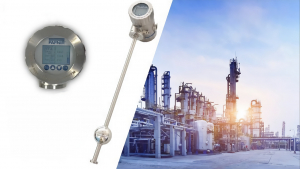
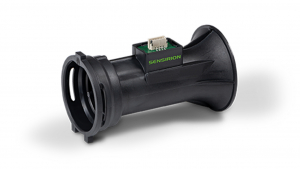
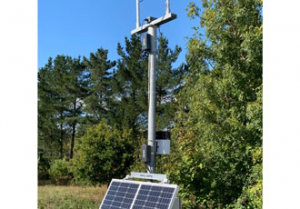
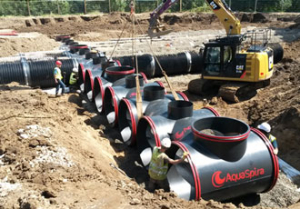
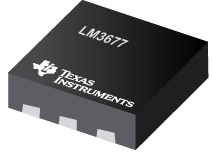

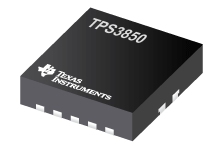
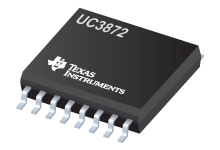

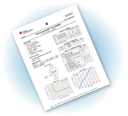

Write a comment
No comments